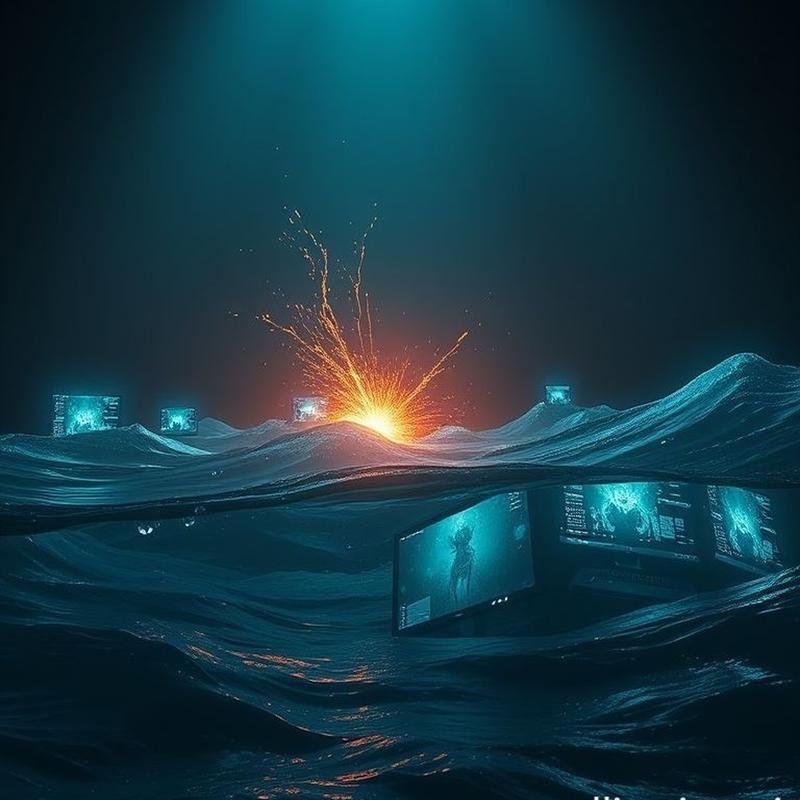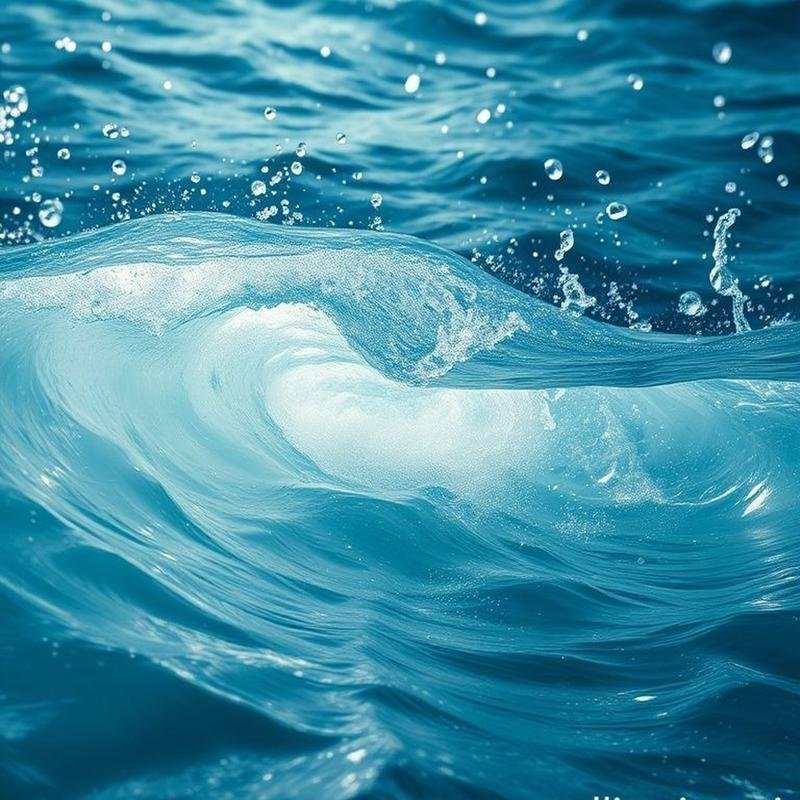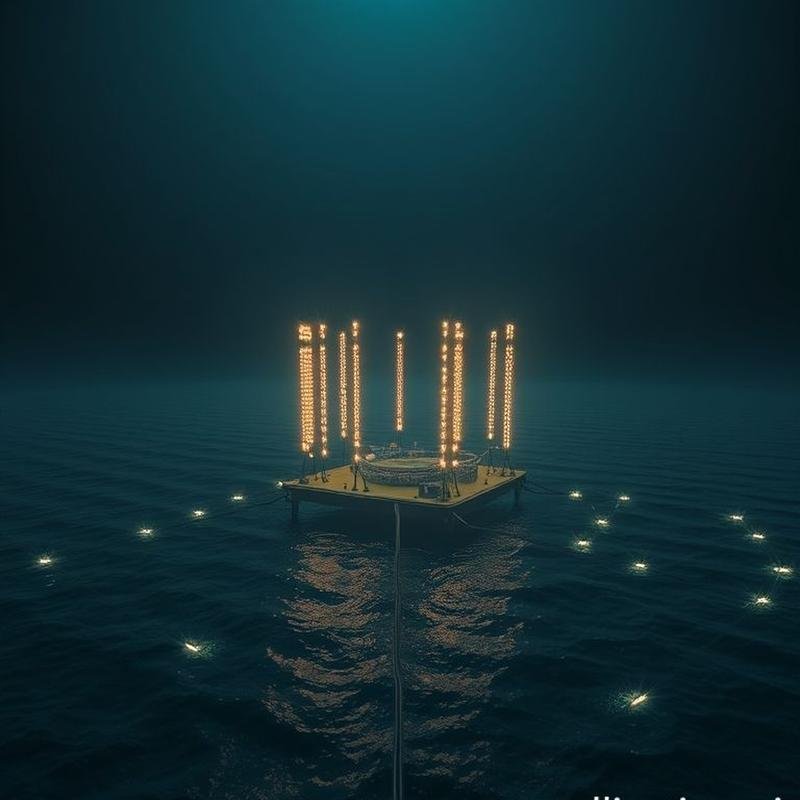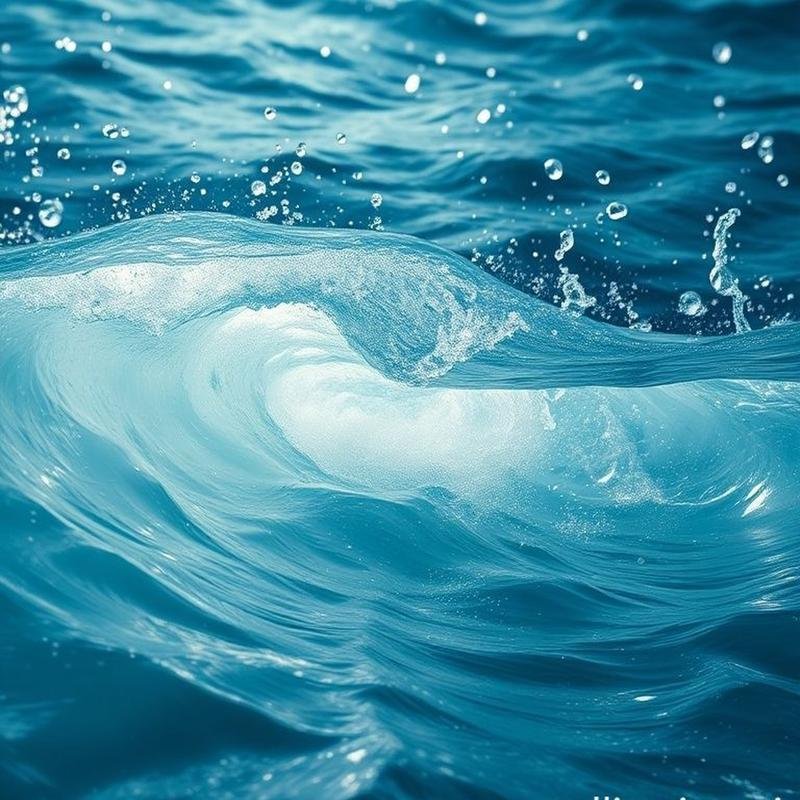The “Bloop” Sound: Evidence of a Creature Larger Than a Blue Whale? 🤯🌊📜

The Bloop: Unraveling the Deep-Sea Mystery
What if I told you that the deepest secrets of the oceans were once captured by a mysterious sound, an echo that continues to intrigue scientists today – a sound they dubbed “The Bloop”? In this episode, we embark on an exploratory journey into the deep sea to unravel the enigma of The Bloop, meticulously differentiating between established scientific facts and the pervasive speculation surrounding it. We will present the compelling evidence that refutes fantastical explanations, while maintaining a sense of wonder and respect for the unknown that still shrouds the ocean’s depths. Before we delve into the core evidence, share your initial expectations regarding this sound.
The Technology Behind the Sound
But how could this enigmatic echo travel thousands of kilometers? The answer lies in the sophisticated technology of hydrophones. These devices, evolved from a prototype invented by Canadian physicist Reginald Fessenden to detect submarines during World War I, serve as our auditory sensors in the deep ocean. These underwater microphones utilize the piezoelectric effect, a remarkable phenomenon where electricity is generated in response to pressure. Imagine each sound wave striking the hydrophone as a gentle compression, converting mechanical energy into an electrical signal ready for analysis and recording.
The SOSUS Network and the Challenge of Localization
Intriguingly, the Bloop was detected by the SOSUS network, a clandestine system established by the National Oceanic and Atmospheric Administration (NOAA) during the Cold War to track Soviet submarines. This network is capable of detecting subtle oceanic sounds from thousands of kilometers away. However, the paradox lies in the fact that, despite this immense capability, pinpointing the sound’s origin remains a significant challenge. Water temperature, salinity, and depth all affect sound propagation, distorting the signal and complicating the precise localization of the Bloop.
Speculation and the Rise of Mythical Explanations
Following the mysterious Bloop’s reverberation through the dark ocean depths, it wasn’t long before imaginative theories proliferated online. In clandestine forums and paranormal websites, hushed whispers rapidly escalated into resounding pronouncements: Had a colossal prehistoric monster awakened? Inevitable comparisons soon arose. Cthulhu, Lovecraft’s terrifying cosmic entity, found a tangible sonic echo in this unknown roar. Horror and science fiction enthusiasts rejoiced, suggesting that perhaps myths were not merely fictional narratives. Wikipedia pages proliferated, each amplifying the legend surrounding the mysterious sound. The U.S. Navy received a constant stream of inquiries, each posing the same urgent question: What is that sound? Even video games incorporated the Bloop as an ominous harbinger of lurking deep-sea horrors.
The Initial Scientific Investigation
However, rampant speculation was soon superseded by scientific inquiry. In 1997, a U.S. Navy hydrophone array detected an anomalous sound they designated “The Bloop.” This network, originally designed to monitor Soviet submarines, recorded something unprecedented. The initial step in the analysis was to locate the sound’s source, which was determined to be approximately 1,760 kilometers west of the southern tip of South America. This is where the investigation became particularly compelling. Initial analysis revealed an extremely low frequency and a prolonged duration exceeding one minute. Even more remarkably, the sound’s amplitude was significantly greater than any known marine animal vocalization, yet its acoustic signature did not correspond to any known living creature.
The Icequake Explanation
Years passed, and in 2005, the National Oceanic and Atmospheric Administration (NOAA) proposed a scientific explanation: a massive glacial movement, specifically an icequake in Antarctica. Further analysis of the acoustic data revealed similar sounds recorded in the same region in subsequent years, reinforcing the ice fracturing theory. The key lies in its extensive range. A sound of this magnitude, capable of propagating thousands of kilometers through the ocean, must be the result of an exceptional glacial event. After years of diligent research and in-depth analysis, scientists attributed the Bloop to glacial earthquakes, a spectacular phenomenon that occurs when massive ice blocks calve from glaciers or ice sheets and collapse into frigid ocean waters. In 2005, NOAA was able to correlate the unique acoustic characteristics of the Bloop with those produced by glacial earthquakes. More importantly, rough estimates of the sound source location pointed to an area near the Bransfield Strait in Antarctica, a region known for its intense glacial activity. This conclusion was not merely conjecture, but was based on precise data collected by the U.S. Navy’s Sound Surveillance System (SOSUS). This sophisticated network of underwater microphones, originally designed to monitor Soviet submarines during the Cold War, was able to capture and record the Bloop multiple times, providing crucial information for accurately locating and analyzing its characteristics.
Debunking the Sea Monster Hypothesis
But could the Bloop truly be a colossal sea monster, a mythical creature lurking in the ocean depths? Most likely, no. Let’s be realistic: despite the allure of the concept of a creature larger than a blue whale concealed in the oceans, the scientific evidence does not support this possibility. First, the Bloop’s extremely low sound frequencies, despite their immense power, do not match any known sounds produced by marine animals. Whales and other marine mammals communicate using a variety of sounds, but they are typically at much higher frequencies than those observed in the Bloop. Second, despite the sound’s immense power, the Bloop has not been recorded again with the same intensity. If the sound source were a living creature, it would be logical for it to emit similar sounds repeatedly. This absence of repetition strongly suggests that the sound source was a singular event, which is perfectly consistent with the ice fracturing hypothesis. Finally, there is no conclusive biological evidence to support the existence of undiscovered massive marine creatures capable of producing sounds similar to the Bloop. Although the oceans still harbor many deep secrets, the discovery of an entity of such immense size would leave other undeniable traces, such as noticeable changes in the ecosystem or even physical remains. The absence of this conclusive evidence renders the sea monster hypothesis highly improbable.
Unanswered Questions and Future Research
However, even with our acceptance of the ice theory, the Bloop retains a captivating aura of mystery. The precise mechanism that unleashed this tremendous roar remains an enigma. We have not detected any similar sound with such exceptional power and unique characteristics since then. Could it be that exceptional circumstances converged at that moment in 1997? Other mysterious sounds, such as Julia and Slowdown, remain undeciphered. Are they simply further examples of acoustic phenomena that transcend our current understanding? And the ability of 1997-era devices to capture a sound of this magnitude from thousands of kilometers away, doesn’t it raise profound questions about the accuracy of pinpointing its source? Most importantly, could climate change make similar sounds more common in the future? These are questions awaiting answers, and groundbreaking research waiting to be conducted.
The Ocean’s Unexplored Depths
But the fundamental question remains: what does the ocean truly hold for us? As we contemplate the mysterious echoes of the Bloop, we cannot help but recall that we have barely explored the surface of this vast aquatic realm. More than 95% of the habitable space on our planet lies beneath the waves, yet we have explored less than 5% of it. Isn’t that a perplexing paradox? We possess more detailed knowledge of the terrain of the Moon and Mars than we do of the bottom of our oceans. But this is not a reason for resignation, but rather a source of motivation! Every day, technology leads us to areas we never imagined reaching. Autonomous submarines and marine robots penetrate the inky darkness, revealing hidden worlds full of wonders and mysteries. It is true that the cost of exploring one square kilometer of the deep seabed can reach $10,000, but the potential return is invaluable. In 2021, the Seabed 2030 initiative launched an ambitious mission to map the entire ocean floor by 2030. Just imagine an entire world waiting to be discovered! Indeed, to date, more than 200,000 species of living organisms have been discovered in the oceans, but scientists estimate that there are millions more species that we have not yet encountered, most of them concealed in the deep sea. Entire realms of biodiversity, waiting to reveal their hidden secrets. In 2016, scientists discovered the Lost City of Atlantis, a unique ecosystem that relies on chemical interactions rather than sunlight. This provides compelling evidence that the ocean still harbors countless treasures, awaiting those who explore it with passion.
Conclusion
Thus, the sound of the Bloop remains an enigma, although the echoes of its scientific explanation resonate more clearly. While science strongly suggests that a massive ice fracture is the source of this deep rumble, the human imagination cannot help but cling to the idea of something larger, something more mysterious, lurking in the ocean depths. The initial power of the Bloop, captured by NOAA’s hydrophone arrays in the South Pacific Ocean, unleashed comparisons to mythical creatures, monsters from other worlds, dwelling in the folds of the collective unconscious. But careful analysis revealed a sound signature that remarkably matched documented ice fracturing events in Antarctica. Nevertheless, the temptation remains. The ocean, this vast world that we have not fully explored, holds countless secrets within its depths. As we continue our journey of exploration, we must not forget that science and imagination, despite their contrasting approaches, can inspire each other, and drive us towards a deeper and more comprehensive understanding of our world.
As we conclude our journey to unravel the mystery of the Bloop, we see that science has provided a compelling explanation, but it has not extinguished the spark of human curiosity. The ocean remains a world full of secrets, where scientific facts meet imaginative possibilities. The sound of the Bloop, whether it is the roar of ice or the whisper of a monster, reminds us of the vast limits of our knowledge, and invites us to continue exploring and delving deeper into the unknown.
Now, after reviewing the evidence and differentiating between fact and fiction, what are your thoughts? Does the true explanation of the Bloop lie in ice fracturing, or are there other forces lurking in the ocean depths waiting to be revealed? Share your thoughts in the comments, and don’t forget to like the video and subscribe to the channel.







